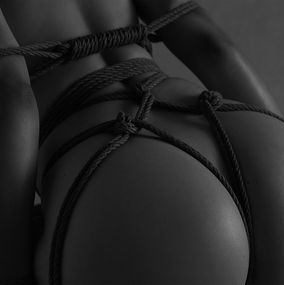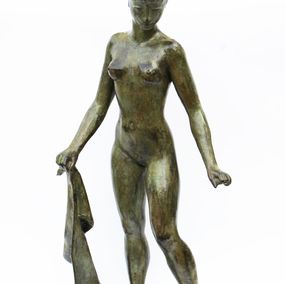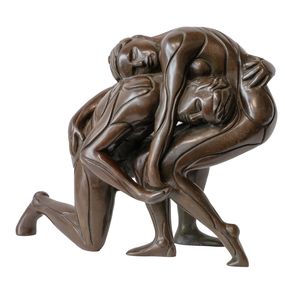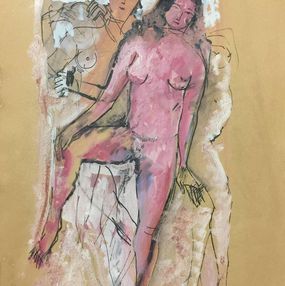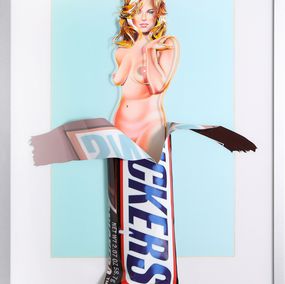
Nude Painting for Sale
The nude has long been a central genre in the history of art, from antiquity to the present day. An essential element of classical artistic training, studying live models has remained a core practice for artists throughout history. From realism to abstraction, the depiction of the human body in its natural form continues to thrive in modern art, particularly in today's image-driven culture. Let's explore the rich and fascinating history of nude art.
Nude representation in art dates back to ancient civilizations, with early examples found in Egyptian bas-reliefs. In ancient Greece, depictions of idealized, athletic bodies became iconic, particularly in sculptures and pottery showcasing gods and heroes with sculpted physiques.
Roman art drew heavily on Greek representations of the nude, and after a brief pause during the Middle Ages, due to the rise of Catholicism, the nude reemerged with vigor during the Renaissance. Artists like Michelangelo and Albrecht Dürer, inspired by growing anatomical knowledge, became masters in the portrayal of the human form.
In 1568, during the Protestant Counter-Reformation, religious authorities banned the depiction of nudes in religious spaces. In response, artists used techniques such as fig leaves, hair, and drapes to retain the sensuality of their works. Despite these restrictions, influential families like the Medici continued to commission nude depictions of mythological scenes.
Over time, nude painting has reflected changing beauty standards and socio-political climates. Baroque artists like Rembrandt and Caravaggio portrayed dramatic, exaggerated bodies. The Neoclassical period, in contrast, revived the idealized forms of ancient Greece and Rome, while Romanticism embraced nudes within the context of war and revolution.
The challenge of mastering the nude has always been significant for artists, due to its complexity. In the 19th century, the portrayal of the nude was often tied to ideas of purity and virginity, drawing on classical ideals and religious influences.
The Romantic period saw a shift, with nudes embracing sensuality. However, it wasn't until the rise of Realism that the nude began to shock viewers. Manet's "Olympia" and Courbet's "L'Origine du Monde" broke conventions with their bold depictions of the human form in unconventional postures and social contexts.
The nude continues to reflect not only aesthetic ideals but also deeper societal fears and desires. The emaciated figures of Egon Schiele and the pale, introspective bodies of Lucian Freud transcend personal aesthetics, capturing the tortured psyches of their respective eras. Contemporary artists such as Gustav Klimt, Francis Bacon, Jenny Saville, Eric Fischl, and Philippe Pearlstein have continued to explore the nude genre in fresh and provocative ways.
On Artsper, explore captivating works by leading artists like Isabelle Lebret, whose intense, blue-toned nudes, Etienne Gros's dynamic compositions, and Ottelien Huckin's delicate, poetic lines push the boundaries of the nude genre. Discover the fascinating evolution of nude art today on Artsper.
Save your search and find it in your favorites
Save your search to find it quickly
Saved search
Your search is accessible from the favorites tab > My favorite searches
Unsaved search
A problem occurred

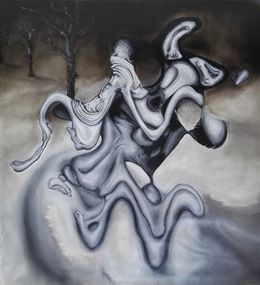

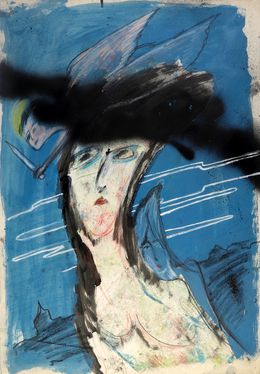

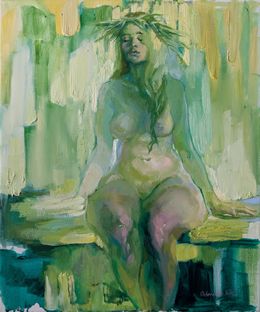
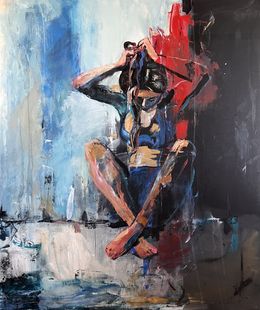
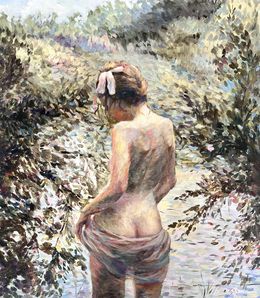
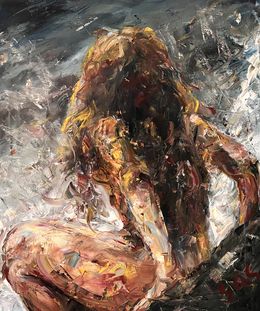


Sculpture de lumière
Alexandre Moore Rockefeller
Painting - 70 x 50 x 0.6 cm Painting - 27.6 x 19.7 x 0.2 inch
$1,755
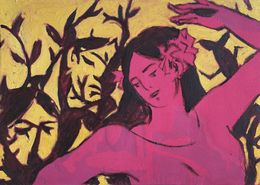
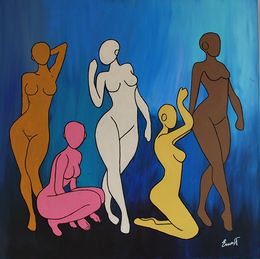


Relaxing nude figure (Diptych)
Carmen Tyrrell
Painting - 39.9 x 102.1 x 1.5 cm Painting - 15.7 x 40.2 x 0.6 inch
$792
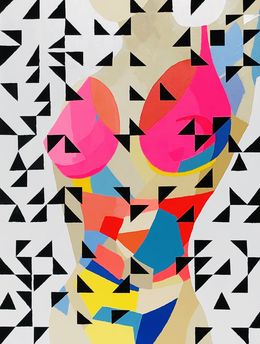
Look iconique
Alexandre Moore Rockefeller
Painting - 80 x 60 x 0.6 cm Painting - 31.5 x 23.6 x 0.2 inch
$1,989
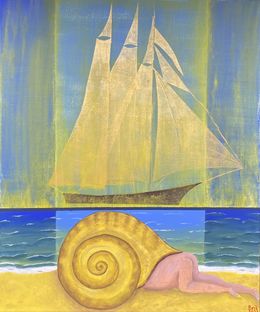
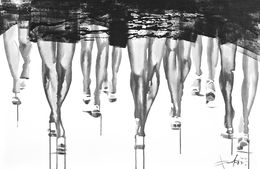

I Still Wear Your Shirt
Joyce Fournier
Painting - 30.5 x 40.6 x 2.5 cm Painting - 12 x 16 x 1 inch
$620


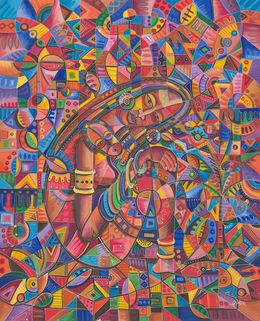
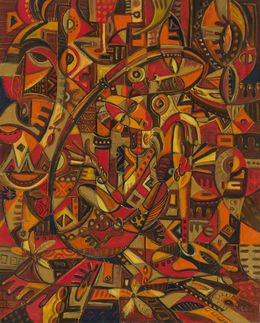
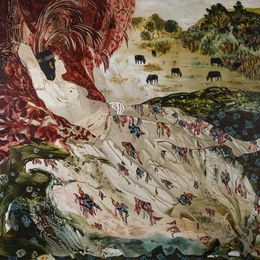
Histoire de femmes 7
Florence Dussuyer
Painting - 150 x 150 x 3 cm Painting - 59.1 x 59.1 x 1.2 inch
$10,530
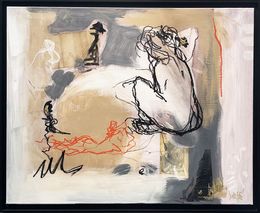
31 octobre _ serie Journal
Marie Renaud
Painting - 80 x 100 x 2 cm Painting - 31.5 x 39.4 x 0.8 inch
$2,574
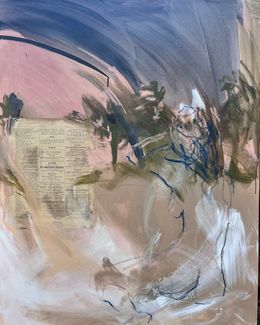
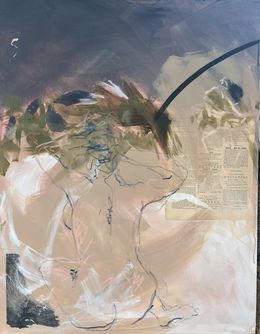
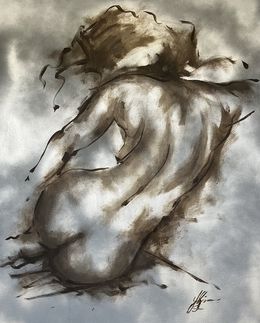

The Bacchantes
Natasha Lelenco
Painting - 200 x 180 x 4 cm Painting - 78.7 x 70.9 x 1.6 inch
$14,040
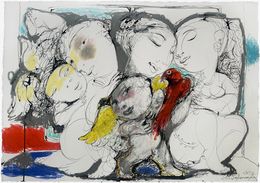
With a Red Parrot
Lilit Soghomonyan
Painting - 50 x 70 x 0.3 cm Painting - 19.7 x 27.6 x 0.1 inch
$1,111
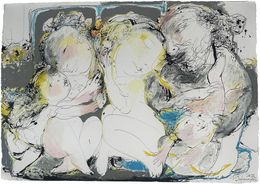
Joyfull Evening
Lilit Soghomonyan
Painting - 50 x 70 x 0.3 cm Painting - 19.7 x 27.6 x 0.1 inch
$1,111
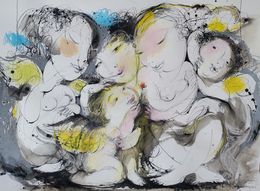
Tiny Scarlet Flower
Lilit Soghomonyan
Painting - 56 x 76 x 0.3 cm Painting - 22 x 29.9 x 0.1 inch
$1,170
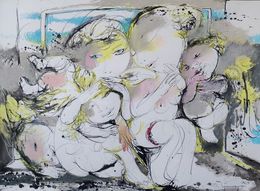
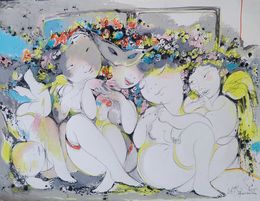
Blossoming Dreams
Lilit Soghomonyan
Painting - 56 x 76 x 0.3 cm Painting - 22 x 29.9 x 0.1 inch
$1,170
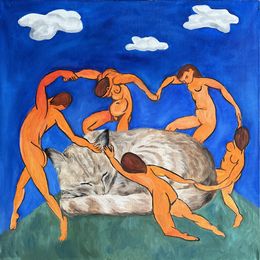
Playful Dance with Cat – Matisse - Inspired Oil Artwork on Canvas
Victo
Painting - 60 x 60 x 4 cm Painting - 23.6 x 23.6 x 1.6 inch
$1,000
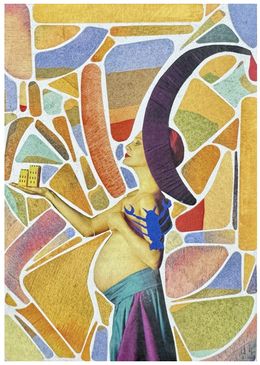
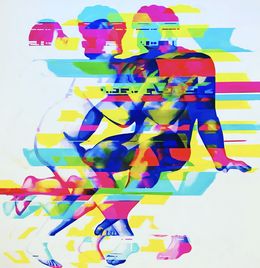

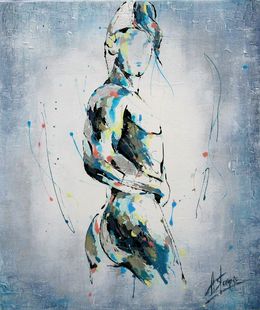
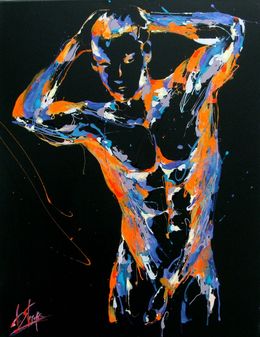
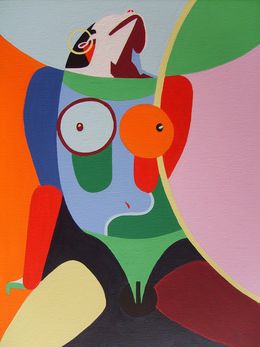


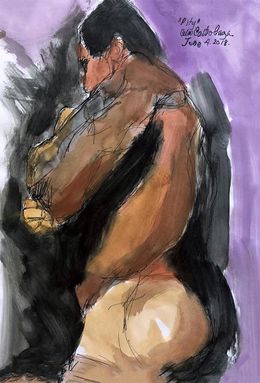

Under the man's wing
Stavri Kalinov
Painting - 110 x 70 x 2 cm Painting - 43.3 x 27.6 x 0.8 inch
$5,850
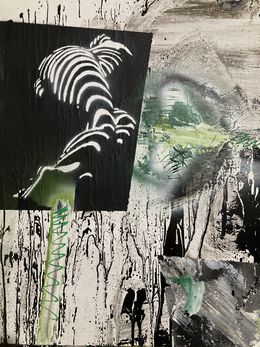
Shadow 9
Irakli (Akuna) Kavtaradze
Painting - 50 x 40 x 4 cm Painting - 19.7 x 15.7 x 1.6 inch
$1,287

Shadow 8
Irakli (Akuna) Kavtaradze
Painting - 50 x 40 x 4 cm Painting - 19.7 x 15.7 x 1.6 inch
$1,287

Shadow 7
Irakli (Akuna) Kavtaradze
Painting - 50 x 40 x 4 cm Painting - 19.7 x 15.7 x 1.6 inch
$1,287

Shadow 6
Irakli (Akuna) Kavtaradze
Painting - 50 x 40 x 4 cm Painting - 19.7 x 15.7 x 1.6 inch
$1,287

Shadow 5
Irakli (Akuna) Kavtaradze
Painting - 50 x 40 x 4 cm Painting - 19.7 x 15.7 x 1.6 inch
$1,287

Shadow 4
Irakli (Akuna) Kavtaradze
Painting - 50 x 40 x 4 cm Painting - 19.7 x 15.7 x 1.6 inch
$1,287
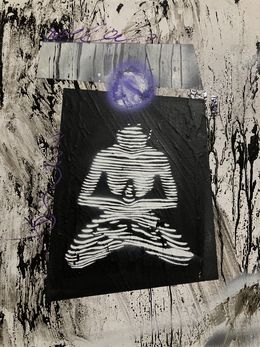
Shadow 3
Irakli (Akuna) Kavtaradze
Painting - 50 x 40 x 4 cm Painting - 19.7 x 15.7 x 1.6 inch
$1,287

Shadow 2
Irakli (Akuna) Kavtaradze
Painting - 40 x 50 x 4 cm Painting - 15.7 x 19.7 x 1.6 inch
$1,287

Shadow 1
Irakli (Akuna) Kavtaradze
Painting - 50 x 40 x 4 cm Painting - 19.7 x 15.7 x 1.6 inch
$1,287

Birth of The Sun
Irakli (Akuna) Kavtaradze
Painting - 100 x 80 x 4 cm Painting - 39.4 x 31.5 x 1.6 inch
$2,574

Subtropic
Irakli (Akuna) Kavtaradze
Painting - 40 x 50 x 4 cm Painting - 15.7 x 19.7 x 1.6 inch
$1,638
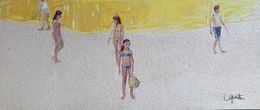
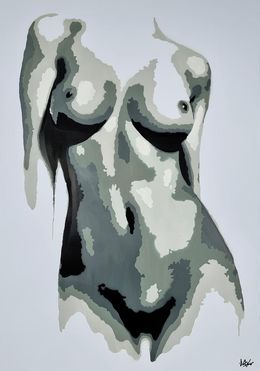
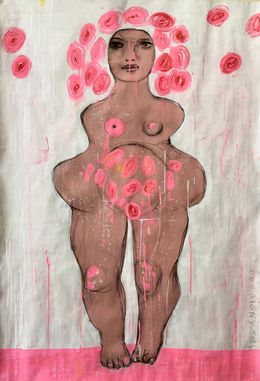
Vénus fleurs roses 1
Brigitte Derbigny
Painting - 100 x 70 x 0.1 cm Painting - 39.4 x 27.6 x 0 inch
$1,872
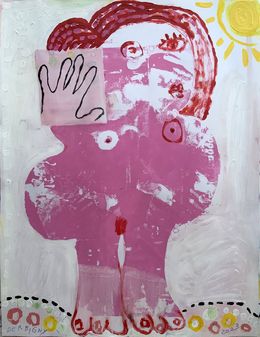
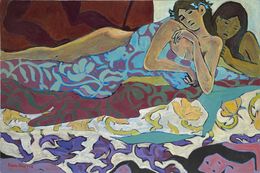
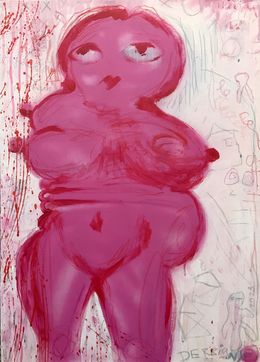
Mademoiselle Rose
Brigitte Derbigny
Painting - 70 x 50 x 3 cm Painting - 27.6 x 19.7 x 1.2 inch
$1,170
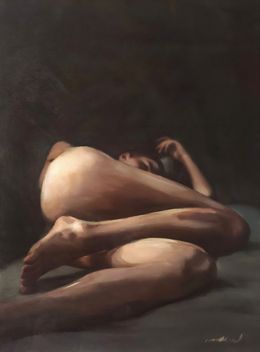
Shadows Of The Soul
William Oxer F.R.S.A.
Painting - 43.2 x 33 x 2.5 cm Painting - 17 x 13 x 1 inch
$2,017
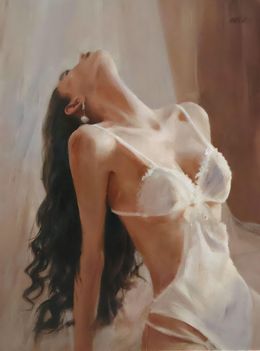
Awaiting Heaven
William Oxer F.R.S.A.
Painting - 38.1 x 29.2 x 2.5 cm Painting - 15 x 11.5 x 1 inch
$1,837
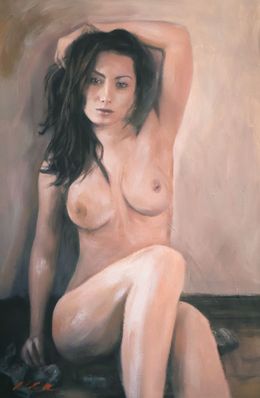
Sempre Dolce
William Oxer F.R.S.A.
Painting - 38.1 x 25.4 x 2.5 cm Painting - 15 x 10 x 1 inch
$1,800
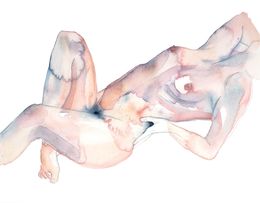
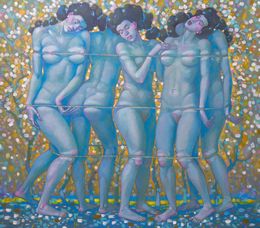
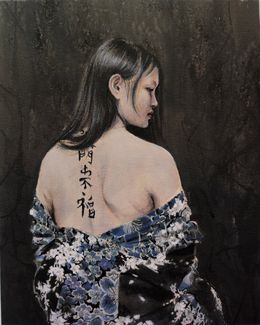
Pillow Book Kimono
Sandra de Jaume
Painting - 40 x 30 x 0.2 cm Painting - 15.7 x 11.8 x 0.1 inch
$2,925

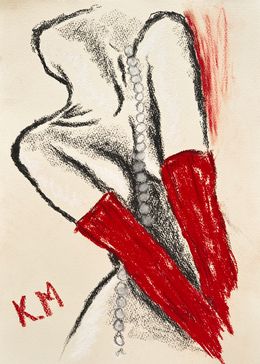
Silhouette of Passion
Kristina Mallen
Painting - 36 x 26 x 0.1 cm Painting - 14.2 x 10.2 x 0 inch
$585

Madame aux Gants Rouges
Kristina Mallen
Painting - 36 x 26 x 0.1 cm Painting - 14.2 x 10.2 x 0 inch
$585
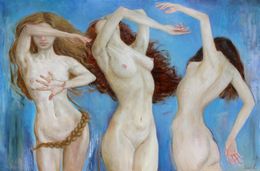

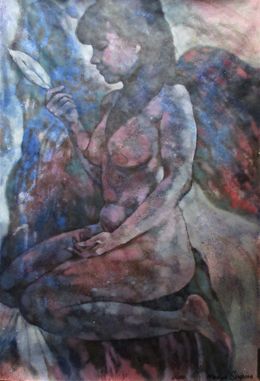
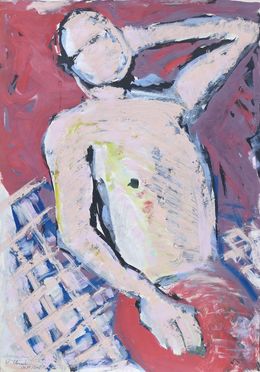

Le cerveau des amoureux
Jean-Jacques Venturini
Painting - 100 x 100 x 4 cm Painting - 39.4 x 39.4 x 1.6 inch
$936
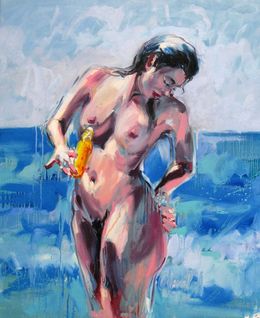
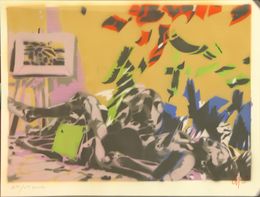
Aurore 2eme seconde
Jean-Pierre Le Boul'ch
Painting - 29 x 38 x 0.1 cm Painting - 11.4 x 15 x 0 inch
$585

Nude Art III-22
Alexandre Moore Rockefeller
Painting - 30 x 30 x 0.6 cm Painting - 11.8 x 11.8 x 0.2 inch
$585
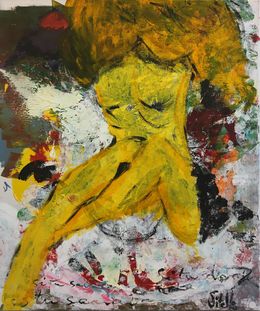
Vénus en jaune
Élisabeth Gineste (Sitelle)
Painting - 55 x 46 x 1 cm Painting - 21.7 x 18.1 x 0.4 inch
$632


A bouche que veux-tu ?
Yohan Storti
Painting - 56 x 140 x 2.5 cm Painting - 22 x 55.1 x 1 inch
$1,755

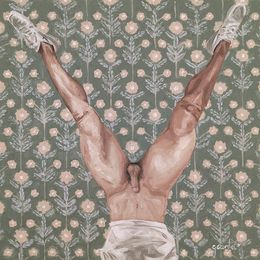
Arnaud fait très bien le poirier
G. Carta
Painting - 40 x 40 x 2 cm Painting - 15.7 x 15.7 x 0.8 inch
$702
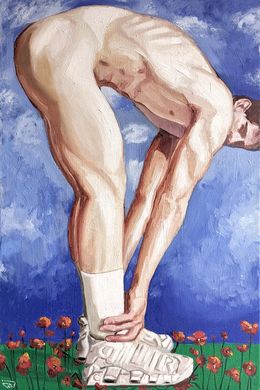
Nicolas aime faire son jogging le dimanche matin avant la messe
G. Carta
Painting - 60 x 40 x 2 cm Painting - 23.6 x 15.7 x 0.8 inch
$877
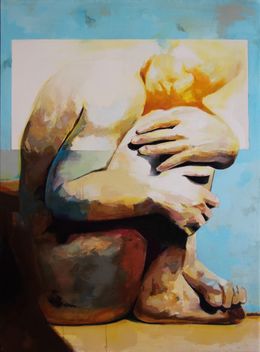
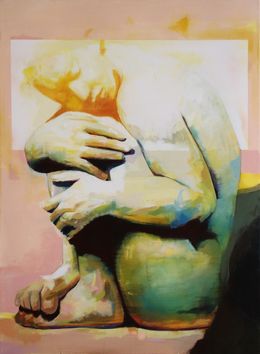
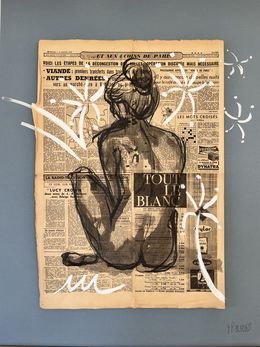

Au quatre coins de Paris
Marie Renaud
Painting - 80 x 60 x 1 cm Painting - 31.5 x 23.6 x 0.4 inch
$655
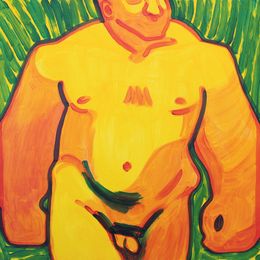

The Watcher
Christian Frederiksen
Painting - 50 x 50 x 3 cm Painting - 19.7 x 19.7 x 1.2 inch
$1,872
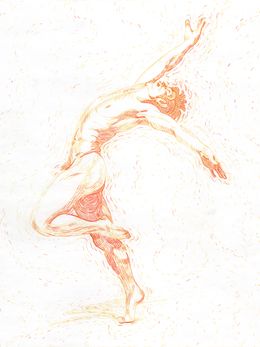
Dancer Disturbing the Field
Christian Frederiksen
Painting - 30 x 22 x 0.1 cm Painting - 11.8 x 8.7 x 0 inch
$983
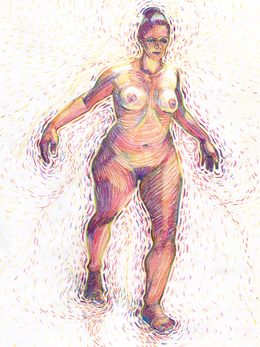
Nude With Pointillist Fields
Christian Frederiksen
Painting - 30 x 22 x 0.1 cm Painting - 11.8 x 8.7 x 0 inch
$1,135
Discover the styles & movements
Discover the selection of our experts
Artists often depict nude sitters in their paintings, and often for different reasons. Some artists want to portray the beauty of the human form, while some want to express ideas or emotion through the nude figure, giving it a deeper meaning.
Artists depicted nudity frequently during the Renaissance due to the re-popularization of ancient Greek and Roman art. This re-popularization is called neoclassicism. During this period, Classical representations of the nude in sculpture were seen as the highest form of art and the ideal beauty standard.
Nude statues, which were popular in Antiquity, began to be seen as representing a "pagan" past during the Medieval period in Europe that was dominated by the Catholic Church. Depictions of nude statues in medieval manuscripts represented idolatry, although certain deepictions of nudes such as the crucifixion were acceptable. In general, clothing was a sign of Christianity and modesty.



